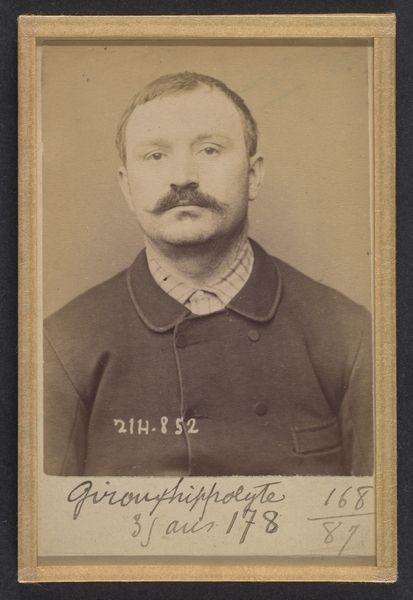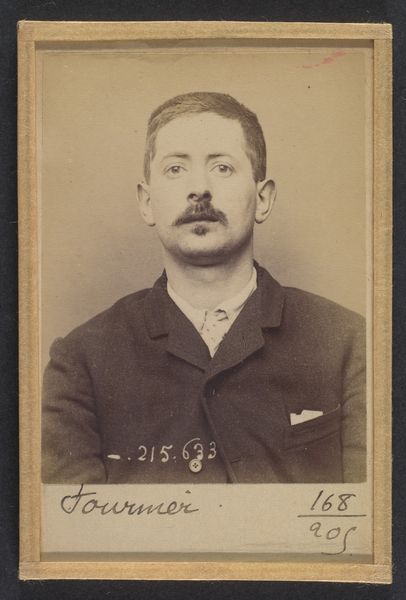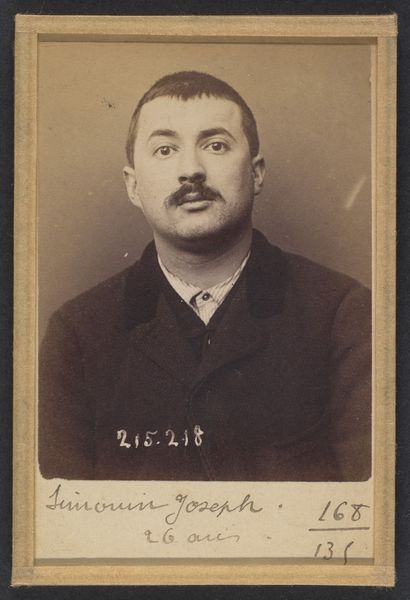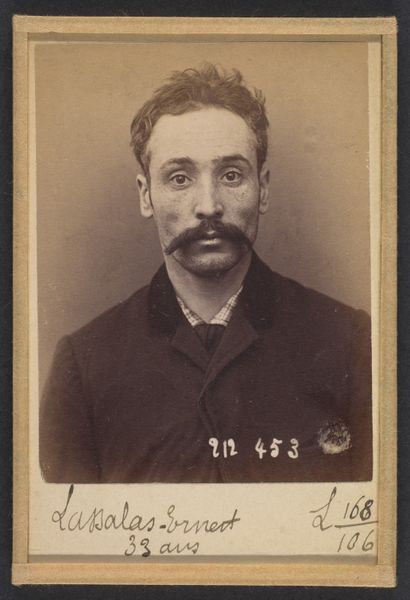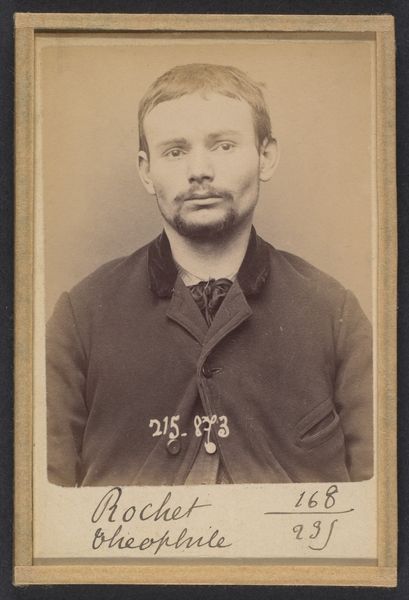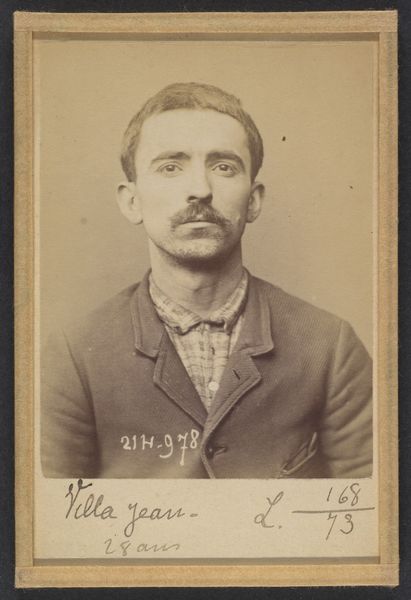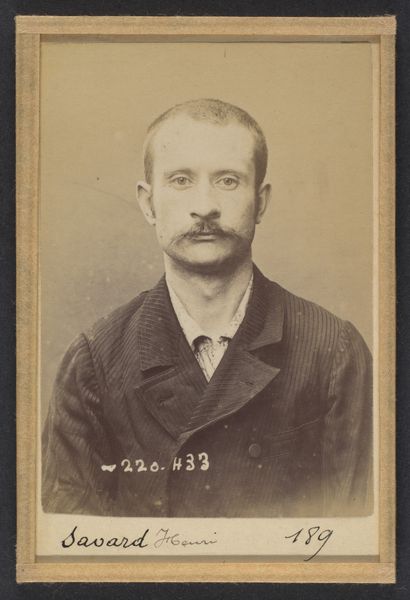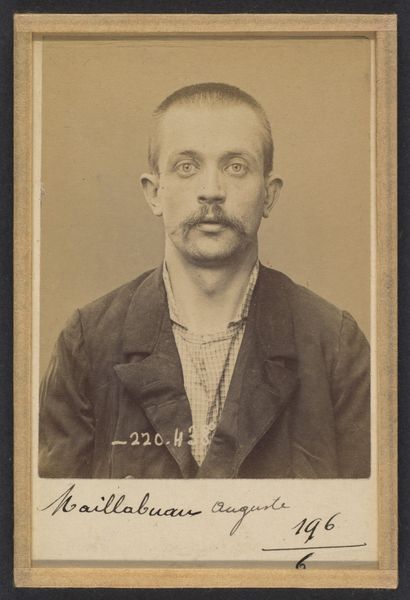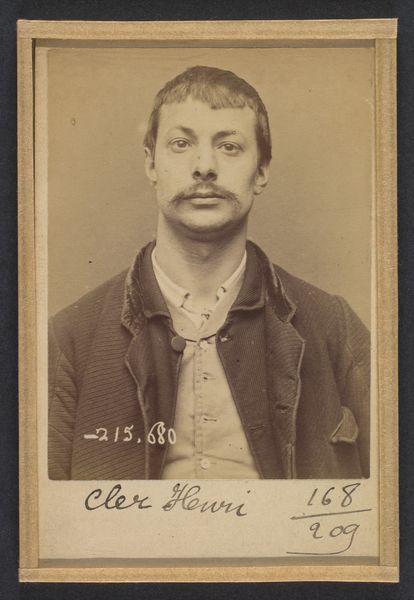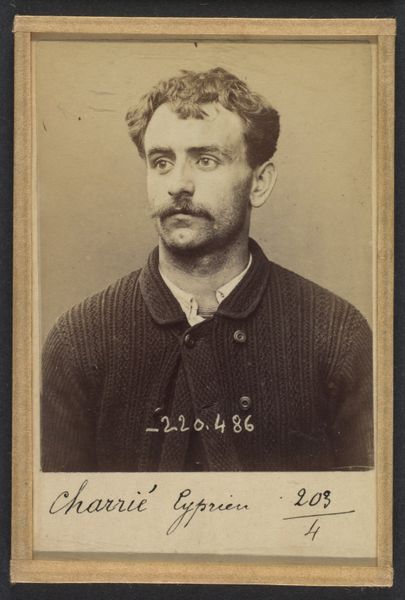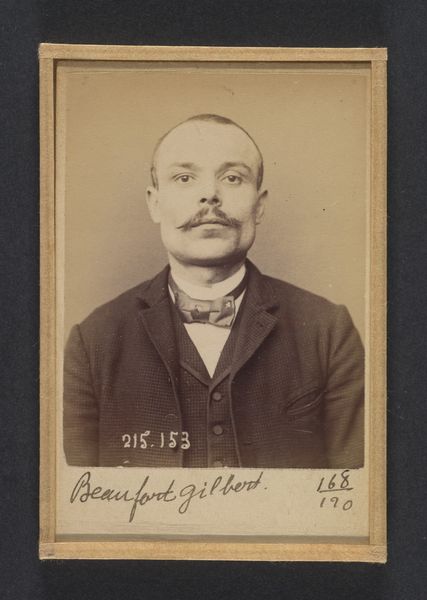
Rouif. Léon. 27 ans, né à Villethierry (Yonne). Garçon boucher. Anarchiste. 1/3/94. 1894
0:00
0:00
daguerreotype, photography
#
portrait
#
portrait
#
daguerreotype
#
photography
#
realism
Dimensions: 10.5 x 7 x 0.5 cm (4 1/8 x 2 3/4 x 3/16 in.) each
Copyright: Public Domain
Curator: This is a fascinating example of Alphonse Bertillon's work, specifically a daguerreotype taken in 1894 entitled "Rouif. Léon. 27 ans, né à Villethierry (Yonne). Garçon boucher. Anarchiste. 1/3/94." Currently it resides at the Metropolitan Museum of Art. Editor: What immediately strikes me is the neutrality. The subdued color palette and stark presentation lend a dispassionate quality. The subject’s expression is unreadable. Curator: That very neutrality is key to Bertillon's project. He was attempting to create a system of identification—a "speaking portrait" as he called it—for the purposes of criminal justice. This explains the almost clinical framing, the direct gaze. It's an exercise in photographic objectification. Editor: And the meticulous notation at the bottom further reinforces this objectification, transforming Léon Rouif from a person into a set of data points. Yet, paradoxically, the very act of labeling him an "anarchist" also imbues him with a specific cultural meaning, positioning him within a network of sociopolitical associations. Curator: Precisely. While Bertillon aimed for pure objectivity, the image cannot escape its context. The framing, the technique, and even the subtle tonality all contribute to a certain aesthetic, which inherently shapes our perception. The shallow depth of field draws attention to his face. Editor: I see that as well; notice how the blurred edges and sepia tones lend an archaic quality. Is he simply a subject captured by the new medium of photography, or a symbol of resistance? Perhaps, through the image, his identity as a 'garçon boucher' is forever fused with that of ‘anarchiste.’ He has a wonderfully large mustache. Curator: Indeed, a telling detail of its time. It's a compelling reminder that even within supposedly objective systems, symbols persist and meanings accumulate. Editor: Absolutely. Looking at this, I’m left thinking about how easily meaning can shift based on framing, historical context, and the enduring power of iconography.
Comments
No comments
Be the first to comment and join the conversation on the ultimate creative platform.
